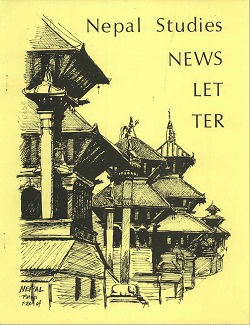Author Biography
Matthew King (PhD. Religious Studies, University of Toronto, 2014) is Assistant Professor in Transnational Buddhism at the University of California, Riverside. His research focuses on histories of Géluk scholasticism along the Tibeto-Mongol interface, with special attention paid to knowledge practice and writing as a response to modernization during the imperial-socialist transition. He is currently completing a book manuscript on Buddhism during Mongolia’s socialist revolution through the life and works of Zawa Damdin Luwsandamdin (1867-1937).
Abstract
This argues that selective memories of imperial-era Buddhist knowledge practices helped Soviet-era scholars localize secularist ideology, knowledge practices, and historical models in post-imperial Mongolia. At the root of one such memory was the eighteenth century eastern Tibetan Buddhist polymath Sumpa Khenpo, who differentiated between historical, legendary and enlightened King Gésars in a letter correspondence with the Sixth Panchen Lama, Palden Yéshé (1738-1780). To the delight of his later Soviet and socialist Mongolian readers, Sumpa Khenpo drew his conclusions about the historical Gésar based on observable evidence instead of scriptural authority. On the basis of a close examination of the contents of those Qing-era Tibetan letters and their later circulation amongst academics in socialist Mongolia, this paper argues that securing secularist certainties in post-imperial Inner Asia at times required strategic emphasis on what were considered to be the ‘pre-modern’ religious genealogies of modernist, rational knowledge and knowledge practices. The historicity of Gésar and ways of discerning that historical identity became, in the memories of Soviet-era scholars, a space of value defined by ‘scientific knowing’ shared between Buddhist monastery and scientific academy. Such productive exchanges continued even when those scholars were writing years after Buddhist institutionalism had been purged through widespread state violence. Ways of knowing Gésar from the imperial-era Buddhist monastery were thus generative of, and not simply effaced by, changing regimes of authority, styles of sovereignty, and privileged ways of knowing the world in the formation of the world’s second socialist nation and the anachronistic invention of secular modernity in Inner Asia.
Acknowledgements
The author would like to thank Nicole Willock, Holly Gayley, and his two anonymous reviewers for their very helpful critique of earlier versions of this article. He would also like to thank Matthew Kapstein, Charles Ramble and the other participants of the 'Destins Divers de L’Épopée de Gesar de Ling, Hommage à Rolf A. Stein' colloquium in Paris (2014), who gave useful feedback on an earlier version of this research.
Creative Commons License

This work is licensed under a Creative Commons Attribution 4.0 License.
Recommended Citation
King, Matthew W.. 2016. Knowing King Gésar Between Buddhist Monastery and Socialist Academy, Or the Practices of Secularism in Inner Asia. HIMALAYA 36(1).
Available at:
https://digitalcommons.macalester.edu/himalaya/vol36/iss1/10


